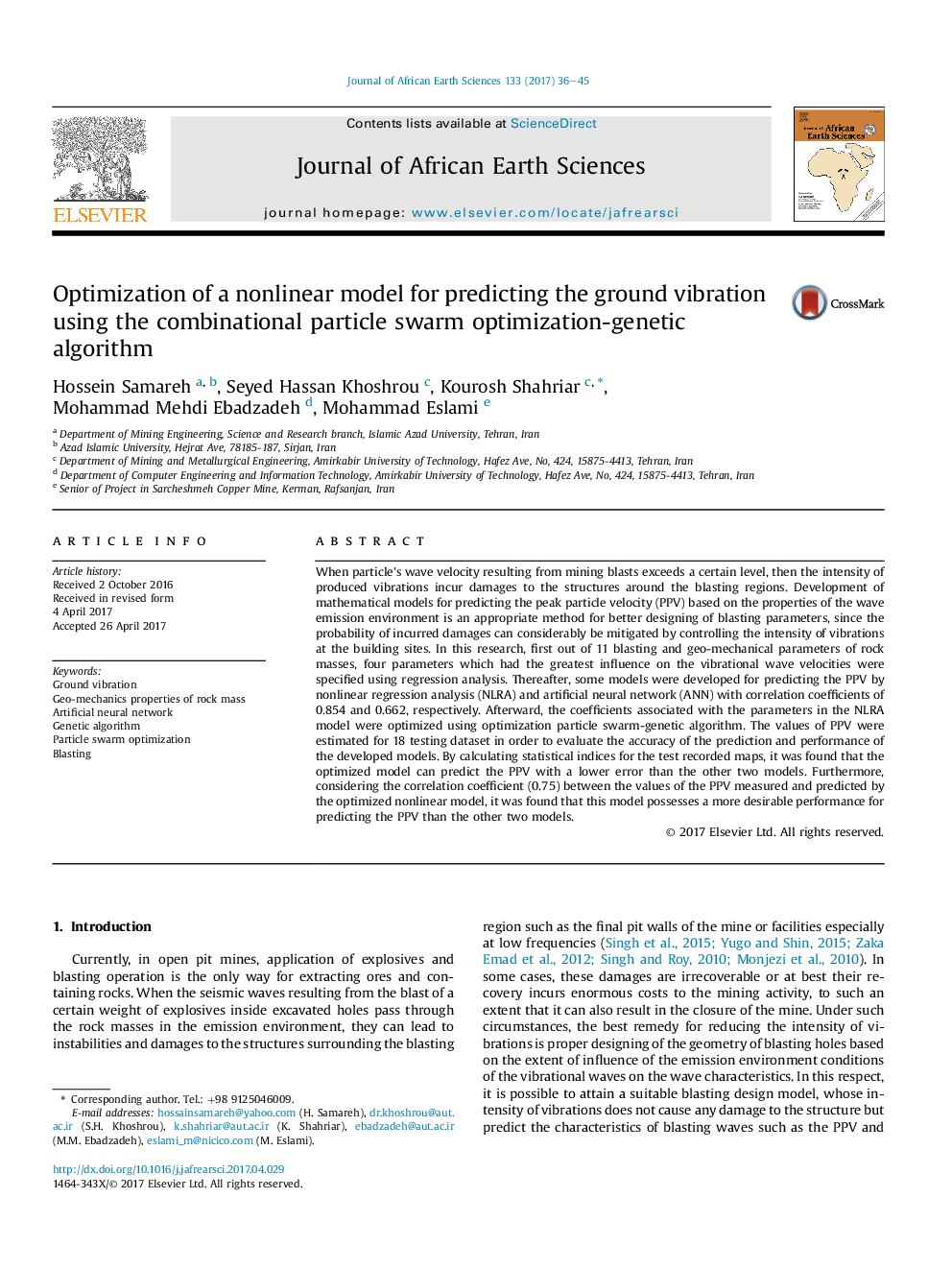| Article ID | Journal | Published Year | Pages | File Type |
|---|---|---|---|---|
| 5785523 | Journal of African Earth Sciences | 2017 | 10 Pages |
Abstract
When particle's wave velocity resulting from mining blasts exceeds a certain level, then the intensity of produced vibrations incur damages to the structures around the blasting regions. Development of mathematical models for predicting the peak particle velocity (PPV) based on the properties of the wave emission environment is an appropriate method for better designing of blasting parameters, since the probability of incurred damages can considerably be mitigated by controlling the intensity of vibrations at the building sites. In this research, first out of 11 blasting and geo-mechanical parameters of rock masses, four parameters which had the greatest influence on the vibrational wave velocities were specified using regression analysis. Thereafter, some models were developed for predicting the PPV by nonlinear regression analysis (NLRA) and artificial neural network (ANN) with correlation coefficients of 0.854 and 0.662, respectively. Afterward, the coefficients associated with the parameters in the NLRA model were optimized using optimization particle swarm-genetic algorithm. The values of PPV were estimated for 18 testing dataset in order to evaluate the accuracy of the prediction and performance of the developed models. By calculating statistical indices for the test recorded maps, it was found that the optimized model can predict the PPV with a lower error than the other two models. Furthermore, considering the correlation coefficient (0.75) between the values of the PPV measured and predicted by the optimized nonlinear model, it was found that this model possesses a more desirable performance for predicting the PPV than the other two models.
Keywords
Related Topics
Physical Sciences and Engineering
Earth and Planetary Sciences
Geology
Authors
Hossein Samareh, Seyed Hassan Khoshrou, Kourosh Shahriar, Mohammad Mehdi Ebadzadeh, Mohammad Eslami,
